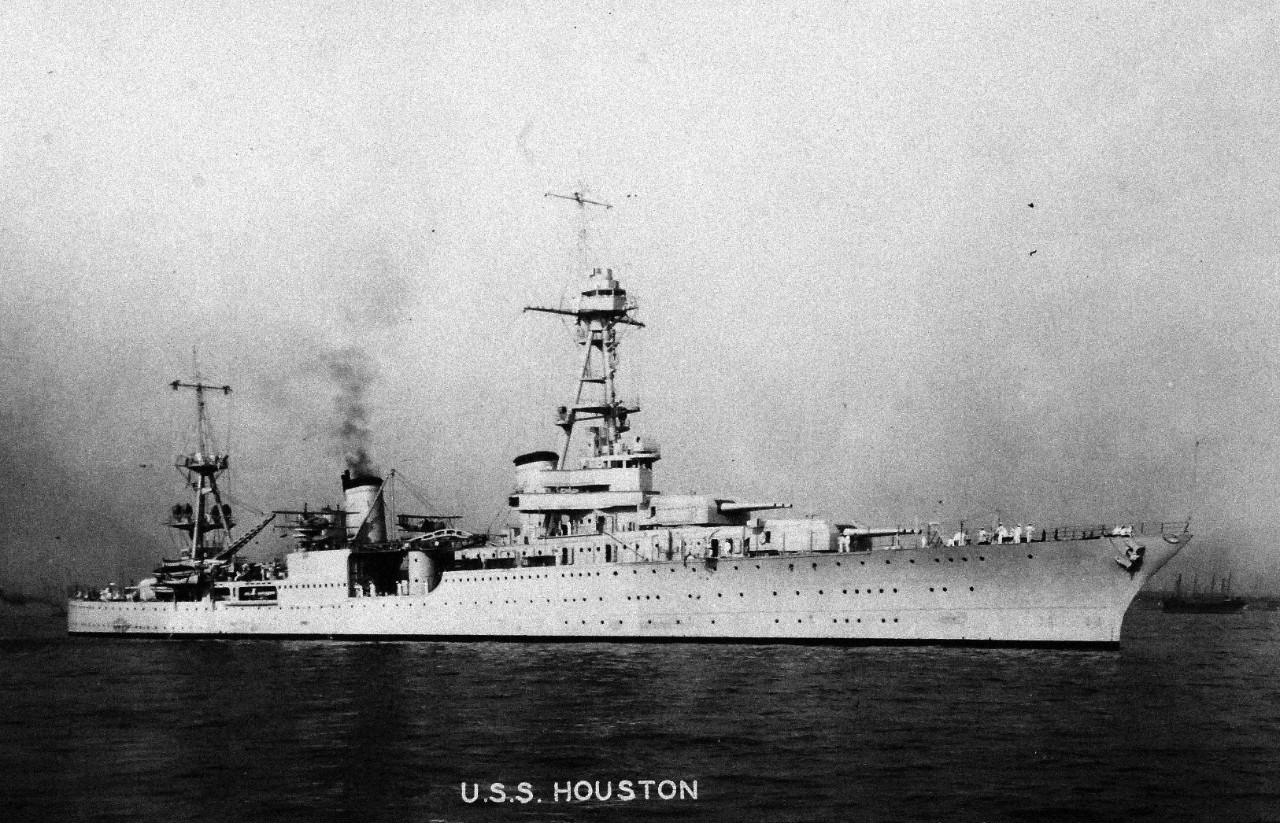
USS Houston Artifact Collection
History
USS Houston was a Northampton-class heavy cruiser (CA-30) that played an important role in Pacific front during World War II. She was launched in 1929 and spent most of the 1930s in the Pacific. In 1938, this Northampton-class heavy cruiser became the flagship of the U.S. Fleet. During World War II, USS Houston participated in the Battle of Makassar Strait and the Battle of Java Sea. During the Battle of Sunda Strait, she was hit by torpedoes and gunfire which lead to the USS Houston sinking on March 1, 1942. Many of the crew of Navy sailors and Marines perished in the battle, and the survivors were captured and interned in Japanese camps. For a more detailed history of USS Houston, please visit NHHC DANFAS site at: https://www.history.navy.mil/research/histories/ship-histories/danfs/h/houston-ii.html.
The Collection
Artifacts from Houston that have either completed conservation or currently undergoing treatment at Naval History & Heritage Command (NHHC) Conservation, Research, and Archaeology Lab (CORAL), include a ceramic cup and saucer, brass fitting, piece of a port hole glass, porthole, rifle bullets, unknown concretions, and a trumpet.
The highlight of the collection, the trumpet, is a C.G. Conn 22B “New York Symphony” model trumpet dating between 1933-1934. Archival research showed that a United States Navy Band was aboard which included three trumpet players. Further research revealed that one sailor brought aboard his own trumpet. The band provided entertainment and represented the U.S. Navy not only aboard but while in shore to help with moral during World War II.
The trumpet is a complex artifact to conserve because of the variety of different materials, such as brass, mother of pearl, and felt, that are part of the instrument. Each material requires a different method of treatment that may or may not harm the surround material. Conservators saw this as an unique research opportunity to learn the best way to clean and stabilize such a fragile artifact. After research and testing, conservators were able to treat and stabilize the trumpet. Archival research continues on the trumpet to help find the sailor that play this instrument.


